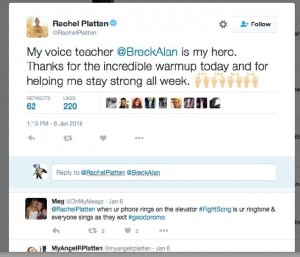Top 5 Reasons to Fix Singing Mistakes
5. To sound professional
4. To compete in the competitive music business
3. To make more money
2. To impress the world with our abilities
1. To limit the distractions from the magic and perfection that already exists in all of us……….
Because that’s really what a mistake is….a distraction. Not just to the listener, but to you, the performer. One of my favorite expressions is, the two most important notes in music are….the first note, and the first note after a mistake. So don’t be distracted by your mistake! Mistakes, are not the point. And even when you make mistakes, don’t make it the focus. Move on, keep reaching for the beauty, and make that the point, the whole experience will be so much better for us and the listener.



